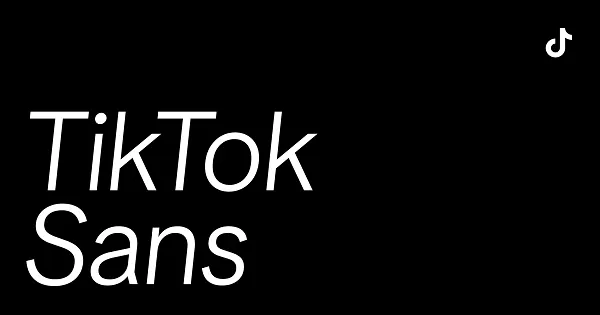Apple’s AR headset—what brands and marketers need to know
The new device poses tons of opportunities for marketers—and many questions.

For all of the hype surrounding Apple's announcement, there are many questions. Apple never used the term “virtual reality” or “metaverse” to describe the Vision Pro, leaving onlookers wondering what this says about the device’s role in developing the virtual ecosystem.
Moreover, brands eager to get their hands on the headset will have to wait at least six months: It will not become available until early next year and will start at a whopping $3,499 a pop. But there is plenty that marketers need to know now—and can begin working on—in order to be best prepared for launch.
Also read: How tech giants are navigating Cannes
R&D focus for brands
The first thing brands should do is commit their efforts to the research and development (R&D) lab, said Keith Soljacich, head of innovation at Publicis Media. While the headset will not become available until early next year, brands can still help themselves now by figuring out how to transition their assets from 2D interfaces to 3D experiences, he said.
Although Apple announced that hundreds of iOS and iPadOS apps will be available on the Vision Pro from day one, these applications will not be headset-native. Instead, they will be compatible, in the same way that iPhone apps became compatible with iPads when the iPad was launched. Applications built with Vision Pro-use in mind will be able to take advantage of the 3D technology that the headset offers.
Retail marketers, for example, could leverage an immersive environment to bring a more engaging shopping experience to consumers. Although Apple did not emphasize this category during WWDC, it did showcase gaming, productivity and entertainment apps based on this same idea of augmenting engagement.
Unity was the sole extended reality software developer that Apple presented as a partner for the headset. Any application that has been built on the Unity language will automatically have access to the headset’s developer tools.
As brands tinker with research and development, they should be asking themselves first-order questions, such as “What is my use case for this product?” and “What actually makes this interesting?” said Julie Ask, VP at Forrester Research.
Consumers aren’t yet convinced of the usefulness of extended reality, such as AR and VR. Only 28% of U.S. adults regularly use this technology for their consumption, and just 22% said they feel comfortable doing so, according to 2022 research from Forrester. As such, brands must work on the “Why” behind their experiences in addition to the “What.”
Marketers should also play around with the headset’s potential to enable new kinds of advertising space. In an immersive environment, for example, display ads could take on a whole new purpose, such as acting as portals to branded experiences as opposed to 2D websites.
“The question of ‘What’s on the other side of the ad?’ could be way more interesting,” said Soljacich.
On the other hand, brands do not have much insight into what kind of ads work in immersive headset environments, said Ask. Questions pertaining to the market for ad inventory, as well as understanding audiences, could further hamper marketers for the time being.
“Advertising still feels a bit tenuous at this stage,” Ask said.
Impact on the metaverse
The metaverse has yet to have a breakthrough application like AI experienced this year with the rollout and popularity of ChatGPT.
But Publicis’ Soljacich thinks that the release of Apple’s headset could get the ball rolling.
“This is the intermediate step we all need to get to the immersive metaverse,” he said.
Related: Web3's branding problem and its future
The logic is that a headset such as Apple’s will propel the metaverse vision because of its powerful functionality and connectivity. While technically a development in the area of spatial computing, the headset could enable all kinds of new experiences that will appeal to consumers, said Soljacich.
One area of particular note is the use of digital avatars, which Apple highlighted as being a feature of FaceTime inside the Vision Pro (although Apple used the term “digital persona”). The headset essentially creates a 3D digital representation of the user’s face that will be what others see during video communication. Avatars are considered an important manifestation of identity in metaverse spaces.
Apple, however, does not seem to care for the term “metaverse.” Speaking at an event last fall, Greg Joswiak, Apple senior VP of worldwide marketing, said that the metaverse is “a word I’ll never use.”
The tech company’s CEO, Tim Cook, echoed a similar distaste for the term around the same time: “I always think it’s important that people understand what something is,” he told Dutch publication Bright in September 2022. “And I’m really not sure the average person can tell you what the metaverse is.”
Instead, Apple is focusing on “spatial computing”—a term that was used multiple times by speakers at WWDC to refer to Vision Pro’s value proposition. The headset once was mentioned in relation to “augmented reality,” but “virtual reality” was never mentioned; neither was the “metaverse.”
The primary reason that Apple’s headset may not be jet fuel for the metaverse is because highly immersive technology simply isn’t the right access point, said Forrester’s Ask. Headsets, such as Apple’s, go for thousands of dollars, are unwieldy and do not have obvious use cases in the outside world, Ask said.
Together, these factors may limit immersive reality’s mass-market potential. It is still possible that Apple’s headset and content ecosystem will create new reasons for consumers to jump in, but as for now, that future is merely speculative. Marketers will have to wait quite some time to see how things develop.

 ShanonG
ShanonG 





















![Run An Ecommerce SEO Audit in 4 Stages [+ Free Workbook]](https://api.backlinko.com/app/uploads/2025/06/ecommerce-seo-audit-featured-image.png)









